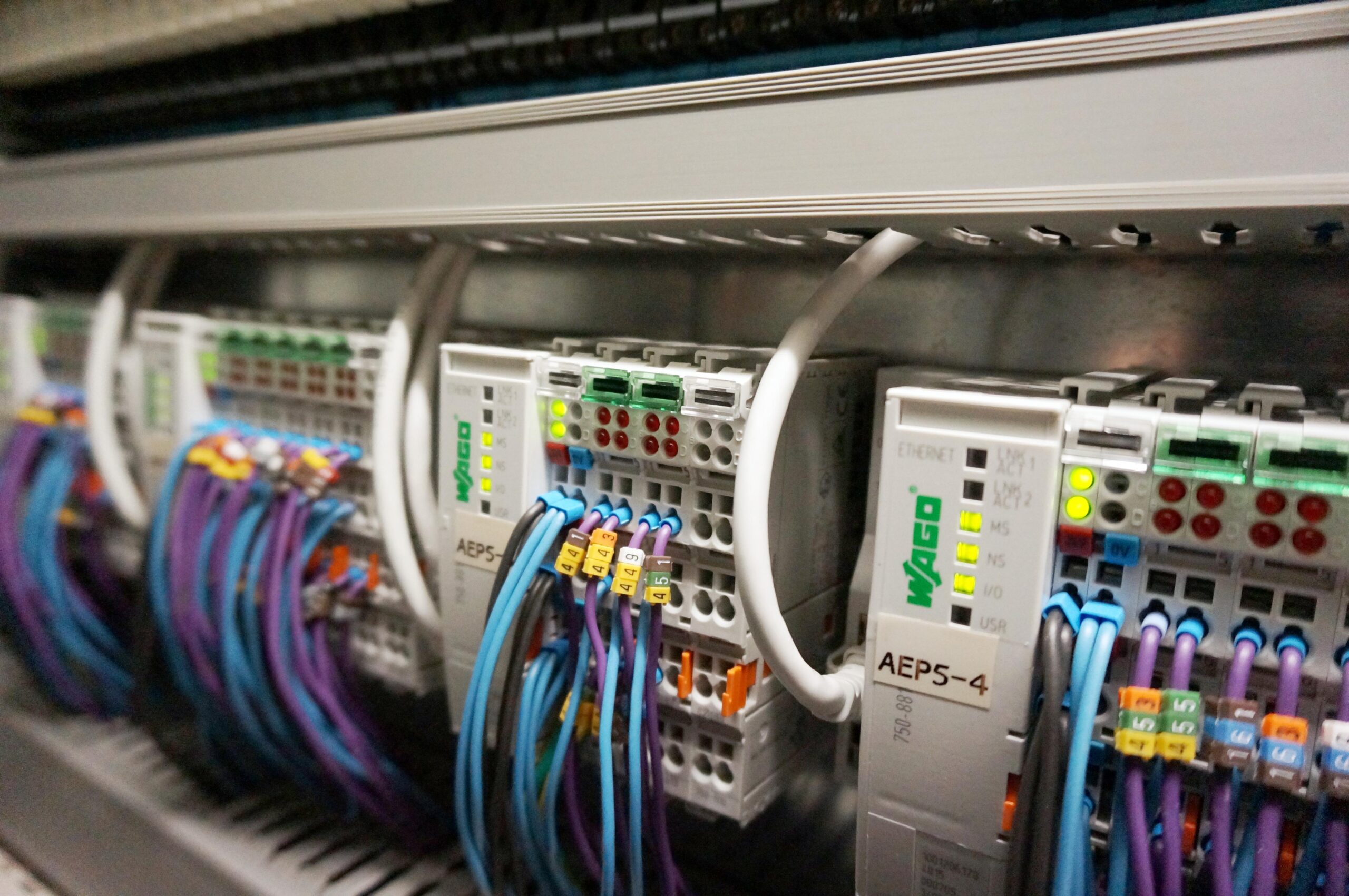Integrating PLCs wiht Ignition in Thermoforming Applications: A Step-by-Step Guide
In the dynamic world of plastic manufacturing, thermoforming stands out as a highly efficient and innovative process—producing everything from secure packaging solutions to large-scale automotive components. As demand for speed,precision,and eco-friendly manufacturing processes rises,integrating Programmable Logic Controllers (PLCs) with advanced software platforms like ignition becomes crucial. This powerful combination not only enhances operational efficiency but also aligns with sustainability goals by optimizing energy usage and reducing material waste.
This article serves as a definitive guide for professionals seeking to integrate PLCs with the Ignition software platform within thermoforming applications. It provides clear insights into system architecture, best practices, and real-world examples. Our aim is to equip you with the knowledge to streamline operations, improve data accuracy, and ensure seamless communication between your mechanical systems and control software.
Key Highlights:
- Understanding PLCs and Ignition Basics: Grasp the fundamental roles of PLCs in automation and how Ignition elevates these systems through robust data handling capabilities.
- Technical Integration Steps: A detailed, step-by-step outline on interfacing PLC hardware with Ignition, including setup of communication protocols such as OPC UA and Modbus TCP.
- Enhancing Process Control: Learn how Ignition’s real-time data accessibility can optimize process parameters and improve overall equipment effectiveness (OEE).
- Case Study Insights: Explore real-world applications where companies have successfully integrated plcs with ignition, resulting in improved throughput, reduced downtime, and sustainable operations.
- Sustainability and Energy Efficiency: Discover how this integration can lead to cleaner manufacturing processes by minimizing waste and optimizing energy consumption, contributing to a greener manufacturing future.
Join us as we delve into the operational specifics and technological intricacies, providing you with an authoritative, technical, and practical roadmap for triumphant PLC and Ignition integration in the transformative world of thermoforming.
Understanding the Role of PLCs in Thermoforming Applications: A Comprehensive Overview
In thermoforming applications, Programmable Logic Controllers (PLCs) serve as the central nervous system, translating complex logics into precise control actions. These robust microprocessor-based controllers excel in managing the numerous inputs and outputs of the thermoforming machines. by orchestrating the synchronization of heating, forming, and trimming processes, PLCs ensure that materials are transformed into final products with optimal precision and energy efficiency. real-world applications often see PLCs controlling manifold components such as vacuum lines, temperature zones, and mold movements. As an example, in high-volume manufacturing settings, a PLC could regulate the heating elements to maintain consistent material pliability while simultaneously managing the vacuum pressure for precise material forming. This meticulous control not only enhances product quality but also substantially reduces material waste.
Integrating PLCs with Ignition platform empowers manufacturers to craft a more responsive and smart production habitat.Through seamless data acquisition and networked control capabilities,Ignition allows operators to monitor and adjust machine parameters in real-time,facilitating rapid response to process variables. Consider a thermoforming line where multiple PLCs are operating across disparate processes; Ignition’s holistic platform can unify data from different PLC brands and protocols, offering a consolidated view of the plant.This streamlined approach supports proactive maintenance strategies by leveraging condition monitoring data, ultimately facilitating predictive maintenance and minimizing downtime. Notably, Ignition’s SCADA functionalities can be employed to model energy consumption against various operational parameters, further supporting the sustainability goals by highlighting opportunities for energy savings.
Configuring PLC Communication for Seamless integration with Ignition: Step-by-Step Guidelines
To ensure a seamless integration of PLCs with Ignition in your thermoforming applications, it is essential to configure your PLC communication settings effectively. Begin by selecting a suitable communication protocol such as EtherNet/IP, Modbus TCP, or Profinet, depending on your PLC manufacturer and plant network infrastructure. Ensure that both your PLC and Ignition Gateway have unique static IP addresses within the same subnet to facilitate smooth communication. In most cases, you would set up your communication protocol settings directly within the PLC programming environment. For instance, if you’re using a Siemens S7 PLC, you would typically use the Siemens TIA Portal to configure your Ethernet-based Profinet communication prior to establishing a connection in Ignition.
Once your PLCs are configured to communicate over the desired protocol, navigate to the Ignition Designer and add a new device. In the Ignition gateway, configure the Device Connection settings by selecting the appropriate driver— Siemens S7-1200/1500, AB Logix Driver for Allen-Bradley PLCs, or Modbus TCP Driver for Modbus-based PLCs. Use the configured static IP addresses to facilitate discovery and ensure communication stability.Bear in mind the need for proper security settings to protect your network; Ignition allows enabling of secure connections with SSL/TLS encryption. Make sure to test the connection by subscribing to key production tags such as machine status, temperature settings, and cycle counts, all viewable via Ignition’s user-friendly interface. With this setup, you can seamlessly monitor thermoforming processes and intuitively respond to process variables in real-time.
Enhancing thermoforming Efficiency with Real-time Data Visualization in Ignition
The integration of PLCs with Ignition in thermoforming not only democratizes data access but strengthens production oversight through real-time data visualization. By leveraging Ignition’s versatile platform, operators and engineers can transform raw data from PLCs into insightful visual dashboards and reports. For instance, machine operators can monitor heater temperature profiles and vacuum pressure data directly via customized Ignition dashboards. This ensures immediate detection of parameter deviations,facilitating swift corrective measures. Additionally, utilizing Ignition’s scripting and alarming functionalities, deviations from set parameters can trigger real-time alerts to maintenance teams, thus significantly reducing the risk of defective product runs.
With Ignition, manufacturers can enhance their scrap reduction initiatives by analyzing ancient data trends and real-time metrics. Consider a thermoforming line equipped with advanced PLCs; by feeding this data into Ignition, the system can highlight patterns of machinery wear and potential failures, such as fluctuations in forming pressure that could lead to suboptimal product quality. Furthermore, interactive dashboards can display key performance indicators (KPIs) such as cycle times and fault codes, allowing decision-makers to swiftly implement process optimizations. Ignition’s strength lies in its ability to unify various data streams into one seamless framework, fostering a data-driven culture that champions cleaner, more efficient production processes.
Best Practices for Monitoring and Troubleshooting Thermoforming Processes Using Ignition and PLCs
Once PLCs are integrated with Ignition for thermoforming processes, maintaining efficient and seamless operations becomes crucial. Real-time data monitoring is the cornerstone of effective troubleshooting. Leverage Ignition’s tag historian to record and visualize critical parameters such as temperature, pressure, and cycle times. Configure your PLCs to send alerts via Ignition’s alarming system when these parameters exceed predefined thresholds. For example, if the heating temperature in your thermoformer varies more than 2 degrees Celsius from the set point, an immediate notification can allow operators to make timely adjustments, preventing wasted materials and reducing energy consumption.
To further enhance your troubleshooting capabilities, implement structured PLC logic that includes diagnostic routines. These routines should systematically check for common issues such as sensor malfunctions or valve failures. By integrating this logic with Ignition’s scripting and reporting capabilities, operators can receive detailed diagnostic reports promptly, aiding in quicker resolution. Additionally, adopt a proactive maintenance schedule informed by data analytics; evaluating trends in thermoforming operations can signal wear or inefficiency before they lead to breakdowns. As a notable example, if data shows that a specific section of the thermoforming press is consistently operating at higher energy levels, it may indicate misalignment or excessive friction which can be addressed to improve sustainability and reduce operational costs.
Future Outlook
integrating PLCs with Ignition in thermoforming applications offers transformative potential for enhancing production efficiency, quality control, and data-driven decision-making. By leveraging Ignition’s universal platform, manufacturers can achieve seamless communication between disparate systems, leading to improved process monitoring and control. Key takeaways from this integration include:
- Enhanced Data Accessibility: Real-time data capture and visualization facilitate immediate adjustments and long-term performance analysis.
- Improved Operational Efficiency: Automated alerts and comprehensive process tracking reduce downtime and enhance productivity.
- Scalability and Flexibility: Ignition’s modular design allows for easy expansion and customization to meet evolving business needs.
- Reduced Operational Costs: Optimized resource use and energy management contribute to meaningful cost savings.
We invite you to explore these solutions further with Innorobix. Our team of experts is ready to assist you in developing a robust, tailored automation strategy utilizing Ignition. For a more immersive experience, request a customized consultation or a live presentation to see Ignition’s capabilities in action. Connect with us today to transform your thermoforming operations with cutting-edge technology and sustainable practices.

















